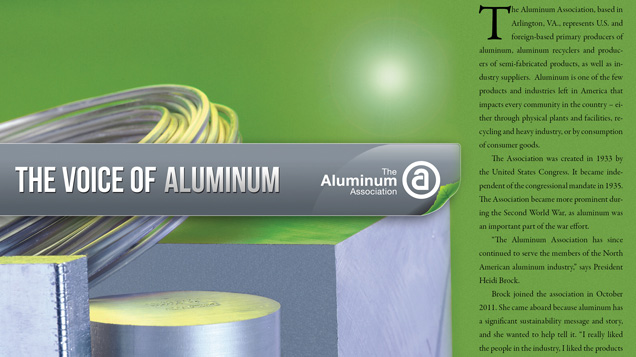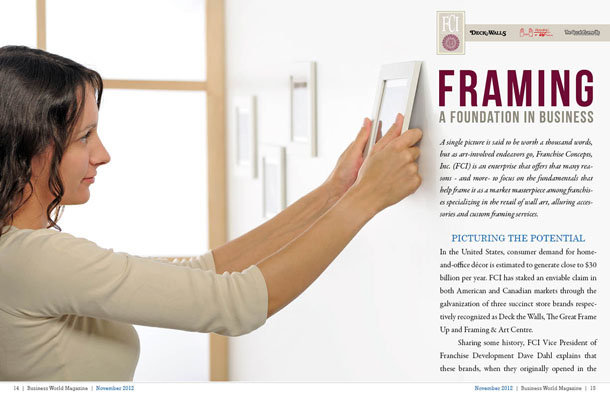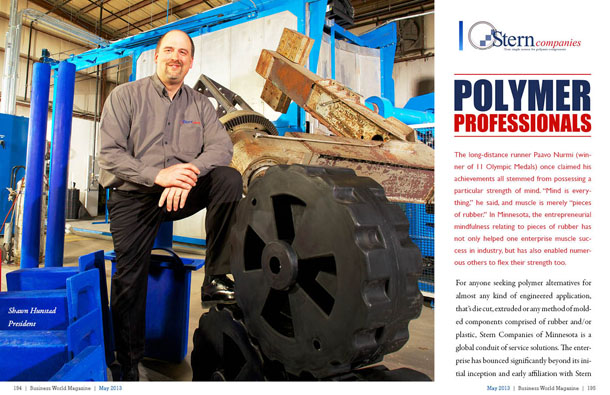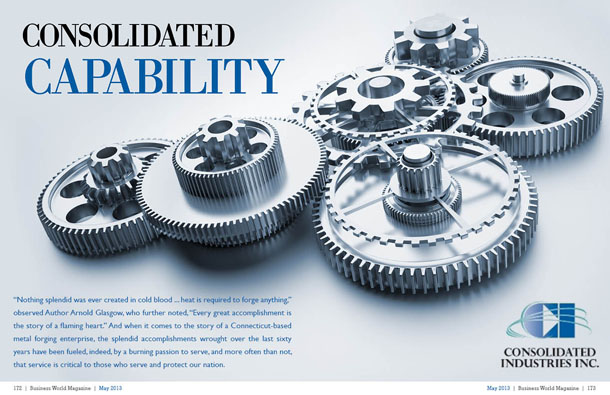

The Aluminum Association, based in Arlington, VA., represents U.S. and foreign-based primary producers of aluminum, aluminum recyclers and producers of semi-fabricated products, as well as industry suppliers.  Aluminum is one of the few products and industries left in America that impacts every community in the country – either through physical plants and facilities, recycling and heavy industry, or by consumption of consumer goods.
The Association was created in 1933 by the United States Congress. It became independent of the congressional mandate in 1935. The Association became more prominent during the Second World War, as aluminum was an important part of the war effort.
“The Aluminum Association has since continued to serve the members of the North American aluminum industry,†says President Heidi Brock.
Brock joined the association in October 2011. She came aboard because aluminum has a significant sustainability message and story, and she wanted to help tell it. “I really liked the people in the industry, I liked the products they produce, but what I really got excited about was the opportunity to help convey the great sustainability message on behalf of the industry,†she says.
Strength through unity
The Aluminum Association represents hundreds of member companies nationally and globally, and their services can be divided into three distinct areas – member advocacy, media, government and public advocacy, and access to databases for North American aluminum statistical information. “By serving in that way, we provide information for our members that helps enhance their business operations,†Brock explains.
Brock says their advocacy role gives the Association an opportunity to represent the broad industry and answer the question of: “why aluminum?† They work to promote aluminum worldwide as the most sustainable and recyclable automotive, packaging and construction material in today’s market.
Vice-President of Communications Stephen Gardiner says the Aluminum Association provides the industry a lot of strength in their outreach and advocacy, allowing members to do “positive things.â€
“Our strength is through unity on a number of issues,†he explains. “We really see ourselves as a very effective and important advocate of the industry.â€
The Aluminum Association works hard to achieve a delicate relationship on “both sides of the aisle†with all levels of government, Brock says. “It’s a continuous educational process because there’s always turnover with people that are responsible for regulating you or inspecting your operations. It’s a continuous educational process for us to convey what we’re doing in the aluminum industry – how we’re doing it and how we’re working to operate safely and sustainably.â€
“It’s also an opportunity for us to be listening for a chance to do more research or take new positions,†she adds.
Because of their well-maintained government relationships, the Association has been successful in influencing government policy.  For example, their Vice-President of Environment and Health and Safety Charles Johnson recently testified on the association’s behalf during hearings on recycling legislation.
“We have a very good dialogue going with the Environmental Protection Agency (EPA) to help them understand the impact of some of the things they are imposing that might prevent us from offering them other solutions,†Brock says.
With respect to the environment, the Association commissioned the first Aluminum Industry Sustainability report for North America last year. It described the uniqueness of aluminum among metals and materials. The report stated that 75 per cent of all aluminum ever produced is still in use today, which is due to its inherent durability and recyclability, Brock says.
“What they also showed in the report was that recycling aluminum saves 95 per cent of the energy and greenhouse gases associated with primary production,†she says. “Recycling one aluminum can saves enough energy to power a television for three hours.â€
“Recycling is really key to the aluminum industry’s long-term success and its ability to continue to be a highly sustainable industry,†she adds.
A challenging global economy
One of the toughest industry challenges facing the aluminum industry is the uncertainty of the global economy. To overcome this challenge, the Aluminum Association allows members to pool their financial resources collectively for information or advocacy, instead of “bearing the costs individually,†Brock says.
“We think the aluminum industry is well-positioned for the eventual upturn in the economy,†she adds.
As for what`s coming up for the Aluminum Association, there are numerous pieces of technical research underway that will continue to aid the aluminum industry in furthering their sustainability message. For example, they have a semi-fabricated product life cycle analysis that will be completed by the end of the year, which will enable them to provide additional technical information in a transparent way.
“We’re very committed to transparency of information so that downstream customers and consumers can look at aluminum versus other materials and see for themselves the benefit of using aluminum,†Brock says.
A future for manufacturing
In the long term, the Aluminum Association hopes to bolster the national focus on bringing manufacturing back to the United States. As companies consider where to invest, the Aluminum Association will better position themselves to provide a stabilized operating environment for the aluminum industry nationally.
Long-term prospects are “very positive†because the United States has a high demand for aluminum products, Brock says. “It makes sense for aluminum to be produced here because the downstream products are ultimately being consumed here.â€








